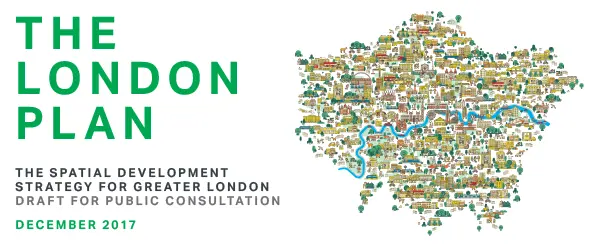Released in 1982 when I was 7 years old, Blade Runner established itself very quickly as a classic movie. It was based on Philip K Dick’s novel, Do Androids Dream of Electric Sheep?
Admittedly it was never one of my favourite movies, as I never really understood it, and found it very dark. Only as I’ve got older and watched it a few more times have I eventually understood the different layers to the story, the production, and the design of the film. I’ll be interested to see how Blade Runner 2049 compares to the original 35 years on.
The movie’s affiliation with the North East is particularly strong given the futuristic cityscape at the beginning of the film, with its bright lights, industrial urban fabric and flames flickering in the sky – the Los Angeles of 2019 it portrays could easily be mistaken as the Wilton Chemical Plant. As Ridley Scott lived on Teesside it is clear the prominent skyline of the Tees Valley played an influential role in the setting of this futuristic classic.
The underpinning basis of Blade Runner is: as robots evolve, at what stage do they become human; and as our lives become more and more computerised, at what stage do we start to become machines?
This conundrum of continued evolution of innovation and artificial intelligence clearly applies to the construction industry today.
It is just over a year since Mark Farmer issued ‘Modernise or Die’, an 80-page report, setting out 10 recommendations to fundamentally change the way the construction industry operates, particularly in the delivery of housing where the UK is falling severely short – hence housing lying at the heart of Philip Hammond’s Budget last week. Among Farmer’s proposals were the need for major changes to the Construction Industry Training Board (CITB); the creation of a new build housing pipeline; and a tax on clients that fail to innovate.
There was nothing in the report which you would disagree with; more a confirmation of the issues that the construction sector has experienced over several years; and which acts as a useful barometer of the lack of progress that has been made.
To be genuinely successful in delivering the housing that is required not just across the North East, but the country as a whole, the private sector cannot achieve this on its own; it must enhance its ability to work in collaboration and partnership and share intelligence, technology and resources with other organisations. The Home Building Fund and Accelerated Construction Programme, coordinated by the HCA on behalf of the Government can assist as part of their aim is to exploit offsite construction methods to deliver up to 15,000 housing starts on surplus public sector land at a faster rate.
The construction industry must also work with training and education providers, Universities and with the Government to radically transform how their workers, from those just entering the industry to those who are looking to retrain. As technology advances and the construction industry continues to evolve, then the upskilling of its workforce is going to be critical.
Modern methods of construction and innovative ways of working are not going to be a genuine success unless we know where we are going to find the skills we need. To seize the opportunities presented by these emerging technologies, training programmes provided by higher and further education is going to be vital. Offsite modular construction provides significant benefits to projects that include shorter construction programmes, reduced costs, less waste and consistent quality as a factory setting allows for strict plant conditions.
We are working in a time where if we are going to make real inroads in solving the multi-layered housing crisis, then we must really think outside of the box. Working with JP Fraser, the MD of Orca LGS Solutions Ltd, is an example of someone who doesn’t even see a box! Lichfields are currently assisting Orca in driving forward development opportunities to demonstrate genuinely innovative approaches to construction. JP’s passion and enthusiasm for wanting to do something different is unparalleled. As he summed up to me:
The principle of successful modern methods of construction is about flexibility, partnership and collaboration. What I am looking to achieve through our developments is to demonstrate our potential to disrupt. Through design, technology and software I want to show how at a scale we can make a change and a difference. We are challenging the norm with a simple mobile manufacturing solution that can be delivered anywhere using local people.
Through our developments I want to bring all the relevant players together to make a contribution – that includes Local Government, Local Authorities, Government Departments, Education, Registered Providers and Homes England. It’s not complicated – it’s a design-led, technology driven process that can be repeated over and over again, and as such can be so effective and successful because of its simplicity – that’s the beauty of it, we are doing more, better, with less.
Having a development that has strong ties to the local college in close proximity is really important. It means we can provide the job opportunities to local students to learn about Light Gauge Steel (LGS) construction, and actually see the end product of their endeavours. The sense of achievement they get from having an influential role in building the houses, whilst learning and developing new skills is great to see. Supporting local young people means we are keeping the pound local through our schemes whilst training the construction workers of tomorrow.
The projects Lichfields are supporting JP with in the North East will enable Orca LGS to showcase the added value modern methods of construction and innovation can generate for housing developments to local authorities, potential partners and politicians.
It is not just the private sector that must evolve and not standstill. The public sector has an important role to play too – however, there continues to be a risk averse culture within local authorities that holds them back from making a difference.
There is the overly used phrase ‘open for business’ by many local authorities I’ve worked with across the country, with an interest in wanting to do something different and innovative – but quite often being just at face value, with no true commitment to see things through. Instead when it comes to specific schemes and details local planning authorities tend rely on implementing ‘safe’ planning policies, or indeed use planning as a regulation tool rather than an opportunity to be brave, and to facilitate innovative development.
We (public and private sector) all need to stand out from the crowd, whilst continuing to add value for our clients and customers. Innovative approaches like modern methods of construction must continue to be driven forward in order to increase the speed of delivery of providing homes people require and demand. If we continue to standstill and not challenge the norm we will not solve the national housing crisis we are faced with.
It will be interesting to see how the development and construction industry grasps and embraces the opportunities innovation techniques can bring, and see these played out in the years to come. I wonder when I’m 74 in 2049 and I dust down the blue-ray disc of Blade Runner I will be living in a world where the buildings and streets are a representation and influence of the classic movie, proving it was ahead of its time?
Image credit: ©The Blade Runner Partnership and/or The Ladd Company








